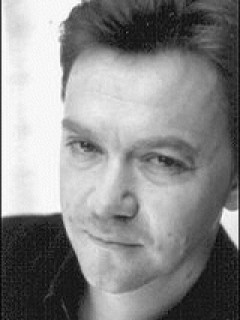It started to get interesting once we moved out of the sector. We talked to sit-com writers, advertising executives, filmmakers, sketch-show writers, as well as games-makers. A clear pattern began to emerge.
There are generally nine abilities required to generate a story that is any good they areŠ
CLOSER: instinct for completion
"OK, so what if it just leads him back to the stable no rats, no hay, no nothing"
LEADER: arbitrates, motivates and keeps it on track
"It's a great idea, but for a different story. We are telling a story about a horse"
LISTER: won't let details slip
"We've told them about the horse's name and how big it is, but we didn't say where they bought it from and how much it cost"
PRESENTER: every team needs a gifted salesman
"And this is the bit a lot of people like, you are going to love this bit"
TOUCHSTONE: keeping it real
"They are just not going to get that. I can see that it makes sense to you but I don't see why it will to them"
FEELER: creates and sustains characters we care about
"I know her, she just does it because she loves that horse she doesn't need another reason"
OTTER: twists, turns and choices
"Her uncle told her that the horse was hidden now she knows her uncle's a liar so he could have lied about the race"
DIALOGUER: the words in peoples mouths
"No, it's too pompous, he'd just say 'Vodka' in a thick Finnish accent"
WILDCARD: totally left field usually does the funny
"And then, just when you don't expect it the horse speaks but in Finnish"
Some creative people may combine some of the above abilities to varying degrees but rarely all it is equally rare to find a creative that accepts this.
Some 'mature' industries have evolved processes by which the different abilities are used during different creative phases (soap writing, advertising)
With some activities the creators are expected to be individual (novelists, dramatists) a lack of ability in an area is often considered part of their style.
Leader/Lister/Closer/Touchstone is a frequent mix.
We were delighted by the simplicity of this. It seemed to have strong parallels in each creative industry. Best of all the team builders could see it being useful. Because some things are too good not to share and because we really wanted to know how new it was we approached In Brief with a view to publication.
Barely had the send button been depressed and it was nowhere near as depressed as the sender was about to become but two references to similar findings came bouncing back. A rather clever chap called Dr. Meredith Belbin (www.belbin.com) has performed a similar analysis on the nine roles within successful teams and The Enneagram Institute (www.enneagraminstitute.com) that more boldly claims to have isolated the nine different personality types in all of us.
Ours is different. Ours is about abilities that can co-exist within an individual but stillŠ Not much point in quibbling they got there first. That is so annoying! There is consolation in that both of the others seem to have spawned industries of trained analysts, so the usefulness of our original intuition is underlined. But the Dromgoole Institute is going to have to wait for another compelling and useful insight and I'm not sure how many I've got left.
Does our story have a moral? Perhaps it's that nine is a really important number I'll save that for California. I think it's more along the lines that you should never trust yourself when you start to strut.
Does our story leave any questions? Well it does actually. Where can we check our stuff? We live in an age in which the sum of human knowledge is only a few deft keystrokes away. Yet I don't know where to start looking for material of this nature.
I could keep pestering our editor but I suspect her patience may wane. So there you have it. It's a call for submissions. The AQR book of great nuggets. Call it "Nutshell". I'd buy itŠ
Sincere thanks to Piers Blofeld of Turning Point for appreciating that some things are too good not to share even if you then find you got less than you bargained for.


